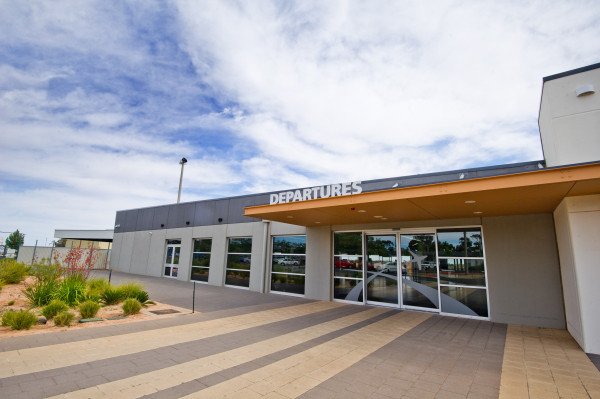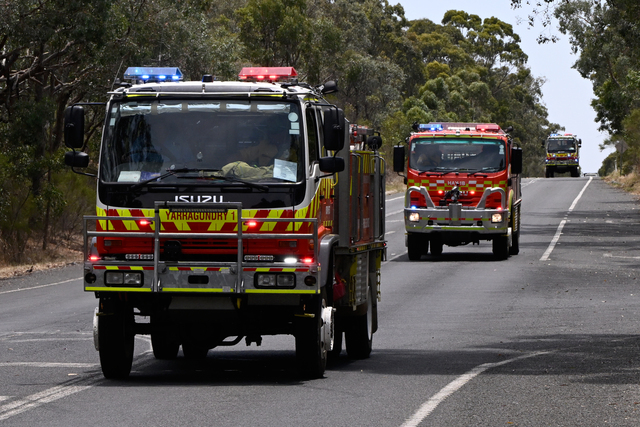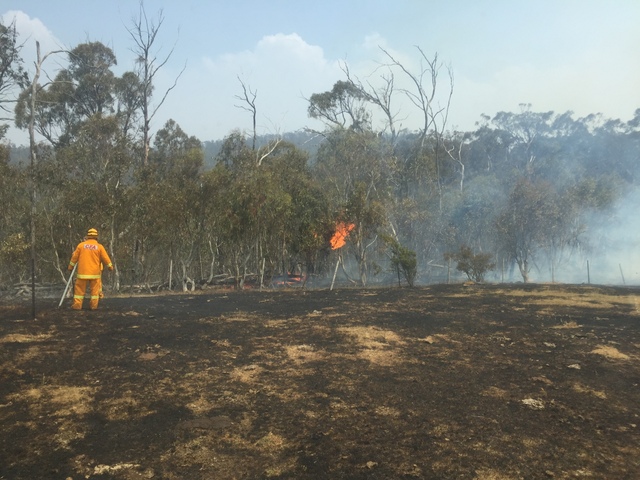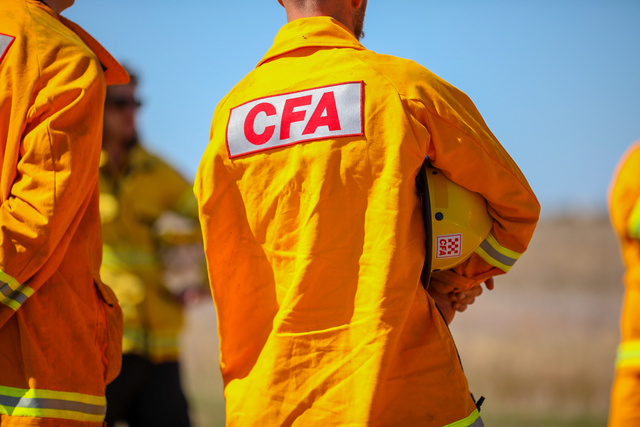Mildura Airport is Victoria’s largest and busiest regional airport, annually servicing over 235,000 airline passengers to Melbourne, Adelaide and Broken Hill. Marina Hacquin went behind the scenes to follow the staff in their daily tasks.
Nathan Stewart
Security screening officer
What do a ram skull, AFL premiership cup and a metal hip replacement have in common?
All three items were found in carry-on luggage by Mildura Airport security screening officer Nathan Stewart.
“A little while ago, we had the AFL premierships cup come through, it was pretty interesting,” he says.
“Someone also came through with an actual metal hip replacement, but it wasn’t in their body – it was inside their bag.”
Along with four other staff, Nathan works at the “X-ray station” to ensure airplane passengers don’t carry any dangerous items – including explosives.
“We advise people things that need to be taken out of the bag, then their bag is checked by the X-ray and we make sure there is no metal using the metal detector,” he says.
When he first started, he was surprised by the number of celebrities passing through the airport’s gates, including football players Dustin Martin and Luke Hodge and comedian Carl Barren.
After three years in the job, he enjoys the variety of his tasks and the fast-paced rhythm.
“In the world we live in, (our job) makes other people feel safe and I think they understand that it’s part of the process now,” he says.
“Sometimes, people even thank us for what we do.”
Kaye Khan
Cafe supervisor
Famous Bondi vet Chris Brown was the latest face to appear on the Mildura Airport cafeteria’s wall of fame.
He is also one of cafe supervisor Kay Khan’s favourite celebrities.
Working at the airport’s cafe, she gets to meet all kind of customers – but her true passion for food is what drives her passion for the job.
“Food is what I’m all about,” she says.
“Everything used to be bought in before I started, now we make everything ourselves, from cakes to slices.
“The only thing we don’t do are gluten free products.”
She says the cafeteria sells about 150 coffees a day.
A qualified chef, Kaye manages the seven staff working at the cafeteria and as a team, they developed a new menu about 18 months ago.
“It was a bit of a challenge, but I like to innovate,” she says.
Beau Bateman
Aerodrome reporting officer
“All traffic, Mildura CTAF, safety car one is entering runway 0927.”
That’s how Mildura Airport Beau Bateman, one of the four aerodrome reporting officers, warns aircraft pilots located within 30 nautical miles he is about to enter the runway.
Driving his fully equipped safety van, Beau opens the tarmac after his first inspection at 5am every morning.
“Pilots have to communicate their position and the radio is the number one safety equipment for me, because I don’t know where they are,” he says.
He knows the area like the back of his hand – his role is to make sure everyone is operating in a safe manner and that the runway is clean and free from any debris.
Even a tiny rock could cause safety issues and has to be removed before an aircraft can take off.
“I’ve got to remove anything bigger than a fingernail off the runway,” he says.
“It takes about 20 minutes just to do the runway, but that’s if there is no problems.
“The minimum standard for inspections is twice a day, but we usually do inspections before every aircraft arrives and leaves.”
Sometimes, a bird is spotted flying over the runway – in that case, the pilots have to wait until it flies away to use the runway.
“We use the lights on the vehicles and the horn to scare birds off,” Beau says. “We’ve also got gas cans making bang sounds near the runway.”
Ken Chiswell
Refuller
Aircraft refueller and World Fuel Services employee Ken Chiswell fills up an average of five planes every day.
From passenger airlines, flying doctor, air ambulance to military aircrafts, his work involves handling expensive machinery and requires specific skills to manoeuvre safely around them.
Refueling an aircraft is complex and very different from filling up the average 65-litre car tank, Mr Chiswell says.
“It’s on-demand, (aircraft) don’t need fuel every time they come in, but when they do, they can require up to 800 litres,” he says.
“Some of the military aircraft take 2000 to 3000 litres.
“They don’t ask for a number of litres, they ask for a weight in tonnes and the truck converts it to litres.”
The fuel is stored in a tank. When an aircraft needs fuel, Mr Chiswell fills up a special truck before driving it near the aircraft to refuel it, which takes about 20 minutes.
Some of the turbine planes require over-wing refueling using a nozzle to put fuel into the tank cells.
Mr Chiswell stepped into his role 25 years ago, after his father performed the same role.
“The amount of paperwork that is involved today has increased, because standards have to be maintained on a regular basis,” he says.
“But it’s a rewarding job in that you get to meet lots of different people.”
Ryan Worthington
Airline operations manager
Loading baggage in an aircraft is like playing a complex version of Tetris.
Depending on the airline, baggage is loaded slightly differently, but there is one general rule to follow – ensure there is an adequate weighing balance.
“All aircraft have to do with weighing balance, you can’t just put bags wherever,” airline operations manager Ryan Worthington says.
Mr Worthington manages a team of eight baggage handlers at Mildura Airport.
The job can also be physical with the handling of up to 360 bags in a short amount of time.
“With Virgin if it’s a full flight, in a 30 minutes turn-around, you could be dealing up to 180 pieces of luggage in-bound and 180 pieces of luggage outbound,” he says.
“That’s about 300kg of freight in half an hour.”
The first time they put their hands on the bags is when they go through a X-ray and security screen, after it was checked in and sent through the conveyor belt.
“People should always have a name-tag on their bag and have critical personal belongings physically, such as medication, on them.”







